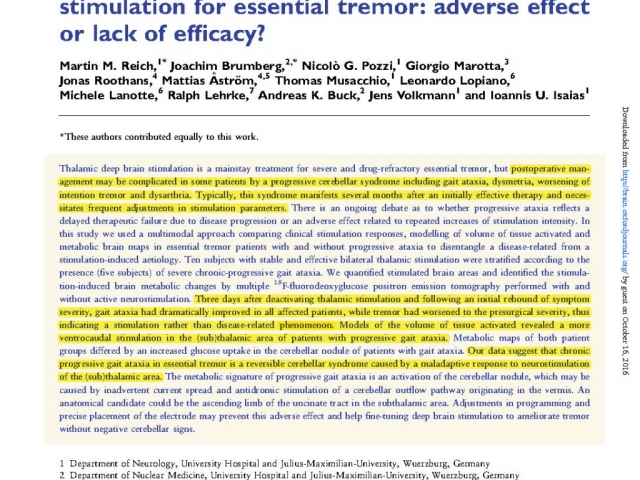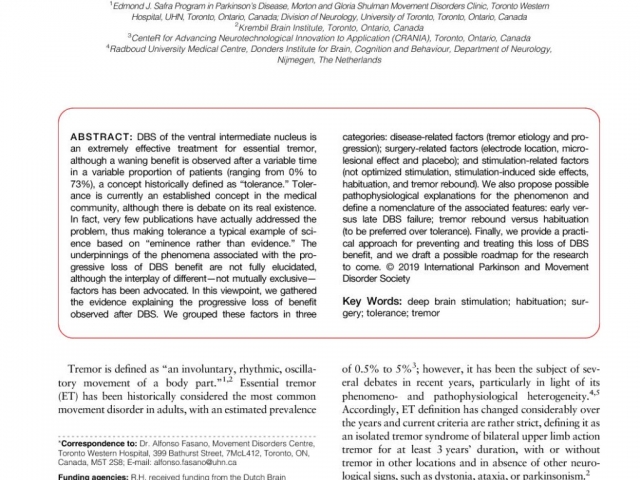ESSENTIAL TREMOR AND ALCOHOL ADDICTION
Movement disorder specialists (and all doctors, for that matter) need to be educated about addiction, and focus on treating patients as a whole person, and not just the symptoms presented.
My spouse has essential tremor and realized, many years ago, that alcohol calms the tremors. Now, after years of self-medicating with alcohol to treat the tremors, and also to calm anxiety, we’re dealing with alcohol dependency, and the doctors are either dismissive of it, or simply don’t know how to deal with it.
I’m aware that many patients with essential tremor use alcohol to treat symptoms. In fact, many doctors even recommend alcohol as an occasional treatment. But, at what point does the medical community become concerned about alcohol abuse and addiction, and actually learn how to deal with it?
When told how much alcohol my spouse drinks in a day, various medical providers have offered no concern or warnings about the dangers of high alcohol use. They have not asked questions to determine if that amount is actually required to control the tremors, or if the alcohol is being used for other reasons.
In my spouse’s case, alcohol is also being used to calm daily and situational anxiety. But, the neurologist dismissed the anxiety as being caused only by the tremors. I realize that essential tremor causes severe social anxiety and embarrassment. But many other life events create anxiety, as well, and the doctors have suggested no other solution or treatment. In fact, when asked if counseling is recommended for the anxiety, we were told “No, not really”.
I believe it is common knowledge that psychotherapy is the standard treatment for both alcoholism and anxiety. Why wouldn’t a neurologist recommend counseling when a patient has other known conditions, in addition to essential tremors, especially when those conditions, like anxiety, are making the tremors worse?!
Overall, I’m severely disappointed that medical providers seem to have blinders on. They are focused only on trying to make a symptom disappear instead of looking at the overall condition of the patient. Most, if not all, essential tremor patients have daily anxiety. Physicians need to focus on treating the anxiety as well as the tremors.
Thousands of essential tremor patients treat their symptoms with alcohol and many of those become alcoholics. But the physicians are overlooking that fact, and have no clue how to address the alcohol dependency. Addiction to any chemical substance is a dangerous and deadly disease. For any medical provider to be dismissive of a patient chemically dependent on a substance is a serious ethical issue.
The good physician treats the disease; the great physician treats the patient who has the disease. —Sir William Osler
Update:
Doctors are not treating the patient as a whole person – What happened to “bedside manner”?
So, our most recent appointment with the neurologist was severely disappointing. The topic of alcohol dependency was the primary topic, which is good because it needs attention. However, the doctor was severely callous and insensitive in addressing this topic. We felt insulted by the severe lack of compassion used to address this issue.
No one who is dependent on alcohol is proud of it. Essential tremor is a physical condition with a wide variety of emotional consequences. Not only are the tremors embarrassing, but when a person also becomes dependent on alcohol, and also can’t find a tremor medication that works to replace the alcohol, they can feel like they’re in a helpless position.
When a physician is asked to help with this situation, and responds with flippant, insensitive remarks, as if he’s talking to a drug addict, it is extremely discouraging and embarrassing for the patient, and very unprofessional for the medical provider.
Patients need to be treated as a whole person, which means each person has feelings and deserves compassion and respect, no matter what medical or emotional conditions they are dealing with.
Written for HopeNET by an author whose name is withheld for privacy.


